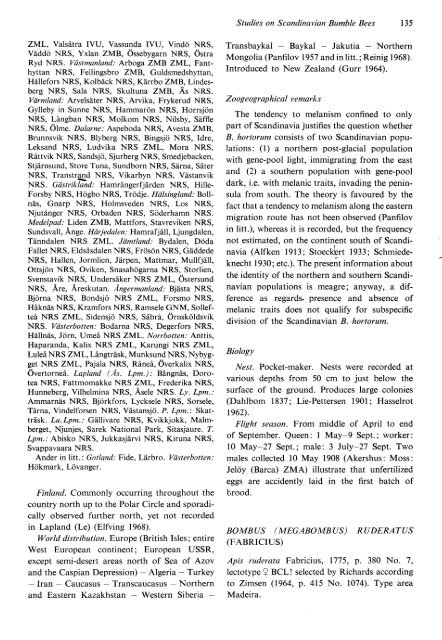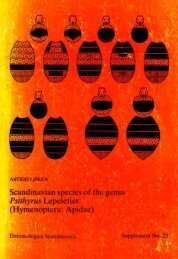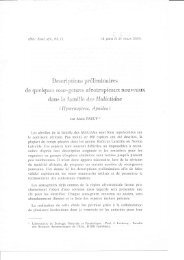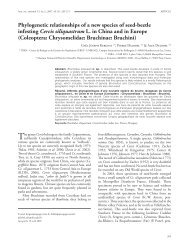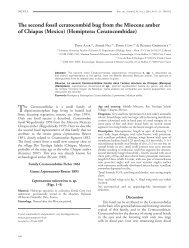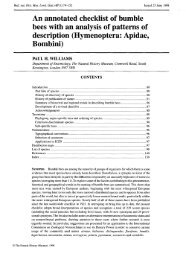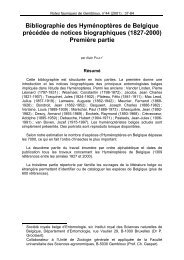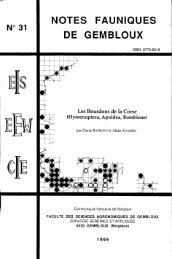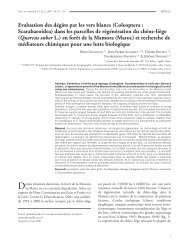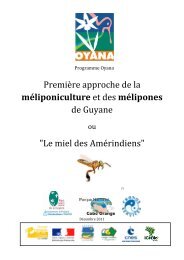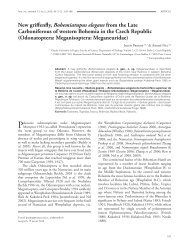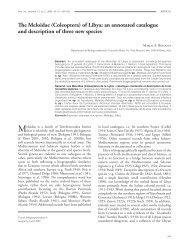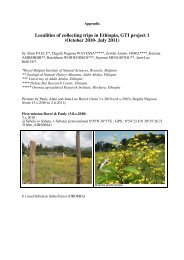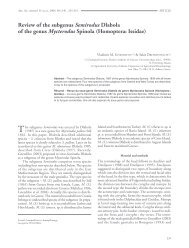gWZ -U 51{N Ig elesddn 'nAI €untlfl '1INZ €tsueJ '^gl3qqoNl erroN "(qlletrN erroN 'ollgw 'slIN ruloq'nwz -lwzs)IN urlotl)lcols 'gwz relsoplo>ls -surASr€W'TWZ 'SUN osu€rupg)I 'SIIN gU 'S)IN SIIN gurler 'gWZ tr d;epery 'SIINruloqoqpfU 'S)INdn;epo1 'gWZ eEurdo4eppgT '-IWZoqutrrR{'SIIN ,{qgt'S)IN g;e1snf1 'seulreuuo-I1g1aq.Z punT'BWZ 'e8elsurueqroT'S)IN,(qlnu) 'Sl{N €rylref 'lllwnf 'o;e8u1'Sl{N e8-reqasu;'e8ull^g)'e8urppeq€unl€H -{J,i)'}lnqsEuny'S}IN p€}suer}slJy'ueEgs;elsol)'SUN 'S)IN loqed;eH ,(q;euu€H 'S1{N uru?qolssug 'SUNI g^I 'rggH 'SIIN f,qrgH '-IWZ'SUN orulD 'uo4rnuJeD'nWZ€unlsg 'AWZ VWZ S"roqEurel -slgH '16WZ t1nqEEe11oeE;eqo{cgH 'f,qfH 'SUN e{s-srulg '1gWZ pfrepue61 'SIIN punseEofl 'SIIN gslepv:punlddp '-IWZ11WZ eEteqly 'SUN -le8Eng'S1IN Euenell 'd"ro1sse11 'eE;eqepr€H'^glslD.(qeue;e11a 'flINZ d;eue1; 'eEur11g[g'SUN pgreftg 'eE-leqeEe('1EWZ SIIN eEurueqrels€A 'e1e;n '3-reqs4rn'IAtrNC'-IWZ 16WZoslepue1 'SUN eII€A 'SUN oser.(a 'SUN f,qle( 'pelsgg 'E;eqelgg 'ghtrZ ^olsregeEur;n1 'SUN 6o>1se1cgg 'SUN >lrlolu€rg 'g.WZ dntepuog'eso-r; '-IWZ SIIN eflgpepgs '9ntr7 seuBuprls 'SIIN 'gWZ ueEo4s>1og 'd;eluelfl 'd.ro1su-rgffl 'SIIN gfsrglflulor{erreds 'gWZ esgfs 'S)IN ue}$lel 'g.WZ seu'(p 'pe;;e[g 'eteq 'd;eu1y :aup1s 'serlqecol'SUN oqulgl4tr'eutlgf 'S)IN eEuuell 'nWZ Jo ]sl-IeEurppnll'SUN punslepuerfl 'SIINI epunlur gl11 :puoluaw"tapos'SIII{ orqero'1gWZ eso11olN erols 'elsrug 'puns;elsv'peuruexo se^a\ sueurrceds ggTt lnoqe Jo lelot v:ayn^l '-IWZ '8;oqs;eug1 'SUN 'sedolorq$IN Igury r,(U-oq1en-essgl'.,tqpung'S)IN seu.(qeuels 'S'U51 sroged-B{S 'S}IN pnrell?>ls 'g14trZ)colso}I 'o;qeuueurdo; eurdle ur popJooeJ ,,{llecrperods,{1uo '[,t1unoc1erf,'urloH 'SIIN guellg 'St{N pE '-IWZeql lnoqEnorql pelngulslp f,leplz11 'uapawsSUN s.rogslEueg:puolslDe '$IN 'S1INlgurspe ,(qte111 'WNC 'snilaao{ 'g ot pesrner ,{1}red erem (egOg1 puerlg)urg[fi'SUN rolso)-p,is '-IWZ SIIN p€]sruor]S 'gUe{Sry:(lg) pnre>lsng tuo4 sprocell 'uortcerroC'suN uru€r{osso'l{ 'suN p€}sro^gN 'l?pe{unw 'slIN€puBIroIN 'S1IN ll€rlsllnqspg 'SIIN elEurq 'pe1se;g'W)II (a) t0SI 'tdeg 9 fi'S'UN nlesqo{€f-esueJgpu€rlslle^ofl :uqsnqog'peqele'SUN eEuruurl :;eEue;e1-rgs : (pt 'WUI) 4"toutuurl ueEue1e141'ete;'SIIN uru€r.Ieclrln 'SUN ep^g{S 'SUN €r€{S 'INUI 'col L : plotgqeg intUt oruproN '1epse1.u;1'SIIN elepe8ugg'SIIN 'pe1seue141 'SIIN{cgqg'U : ^leslgry ipresEue LE-I 6sgrlog : puelugls i/UJ '.(ou.ry:,{oue[4S:ltiUt ,{o16ng:,{oq.re;1IAWZ VJA hlUI: osruoJl I persoqrg : IrAuoT :lt,,t 'seuelrog : ptofg-ee^) ipers;e11 : (,Qt) suto.U '€llory erols :ueEgn: ^uN ')pl€qsu€f '>1lnEe;q'ue8og : seue^E l1lnre51g{cgT';ellenprJa-I'e11n1euul)'euur;'SUN,{qepe;'SUN 'SUN rysue{oH E;oqelog 'SUN d.rolsg-rg'1rns;og'SUN Eurdo>11eg 'e1srg 'fIW7 sgsEully :puol-79tua7so71 'AWZ ourllg|; '1EWZ d"rou;ef]S 'SIIN gfs-nelS'SUN eErequo{S'rulor{sroN'SUN Eurdol;roN'SIIN fqtqfiN 'S)IN Eurdo>1ulT'S1{N eEuq;'1EI IZ [q,-EgH 'S)IN E;e11'e1so.rg'IAtrNg Ereqsuerog :puo1tg?4a$O '-IWZ WNC eEuen '-IWZ $IN {qslA 'eEuBlS'vWZ relsopletuoll 'e1sfo1 '-IWZ yWZ u;e8nf1'elull) 'lu11IEgI{ 'ep;eg '-IWZ 17WZ Eo1s1y :puol-tog '-IWZ SUN ,(qe14crn 'SUN u,(qsEo4g 'ourse11'tet,.le s€usJed i-tWZ SUN eEug1,{qJgry 'eso11sey'SUN urn;sEo11 'S)IN ,{qprgg '-IWZ SUN eEuru-urglg 'd"rolslEueg :puole '1INZ -IWZ I IND eE;eq-sJo{Je}sO'S}IN otueure1 ',(q;eururrn 'SUN pets-lll^ 'SIIN sguerl 'nlNZ ,(qss,(g 'urueqs;€cso'SUNe,tN 'SUN o;q,{51 'p,t;e>1"rel4tr 'nl4tr7 ,l,q8unt:I'nWZWNC eE;sqs;o; 'SUN retule) 'SIIN Eurdo>1uo1'SIIN €poroH 'fqsp,t-r€llnH 'SUN pe1;cfg '1INZWNC euuerg 'nWZ epuelss€C 'SIIN ,iqs[C 'SIIN! Eneq;,(q 'prBE pnre>pl€g : ueEuelleg : OWZ -pro[-s,{I :protgs,ta lllnernlg 'preddg :,(o-ruuie11 lruUt{l^sg}I 'guuog : ploJrgs : puN 'TWg teuu€^plo|;1'e>1sneg : e{sneC I ruUl 1ep;oLrolg 'INUI Brnslep-relunf 'preEerq : I€plles I uelepglgrg : urereg lteE-uey 6uereqllo^sso)I ''1s puelrepun( 'seugllefg :eu€lIiVltlZ ueE;o;1'profuplouurC : seutueH i uel4eqssel€ll: usJeA ls-togo;a oeue;gr 'oullefggg : ouerg .'.ls11 'ne{S'uelrnsdol 'ourlso-rg'gpog : gpog l gonne4g o1es1e1'losllD 'uap;gEelserd'seuurg : Ig>lsoplrg lue;eppdg'euun;1 'ue1eq :,{o1ery ! euse51 '^,{o;eule11 : euseN:Xl :€rutuos : (rts1{) puolp"toN 'Eneq4;gfg :ryu,{o11iuellonuurg : ueEo>1sur€N l leE;eqelll>ls :1epuu1,to11I erlen; : euJerT lesgug 'otq EJo-I 'eEEe11'pelsuo.rg: esgus lEuo"rg : Euo;g iue1,("rg : €ll€qrolo igWZgls{e 'SUN d;e;oq 'S}IN d-rolsugrg 'gIAlZ ylNZ uIeS :;el1ure1g ieleg : uerre1 | ue8g,rleftS 'EEnepoqeuv -seuo{rr):puolputs 'dnrey €rlso 'Sl{N E;eqren 'SUN :OWZ')oI L :,(orepul Inqnn 'en1s1ng 'pe}seEutu -eplls 6e>lrnpu€s: IepJeA ierrsE;eg 'lepnv :;e8uenel-els 'SIIN d-rolsous'SIIN p€]surl€H 'SIIN eEutleg I uueuols : >lr^s>le-I | treune;ellll 'VntrZ uaslarqqup-rot1g'IAtrND sgsEeq 'SUN per€erg :puollCIH '$IN gl1 'e{uB-I'un11n1o'1s e;EeH : IeprgFS l;e4g;e61 : relgrelN'S)IN uruegrol'SUN {qepgU '116z.(qeuuog 'WNglledouerlslr) 'SIIN €uor>lslr€) 'uureqqJ€) 'I : 'uelrnsuu€r,uJ€D 'eueleq 'ue>1r,,rre;glJN: fo;e51INgl : (ttg )Eoqsugl :a8u14a7g'-IWZ gWZ snqy 're1so11spe^OSoppug"U-p.to1I 'Ini) euol€A 'gWZ vJAWUI IW) : turoqpuorl l 'snqpe141leqog: nqles'droa €rlso'e1go1.rg'SUN pels1 'f,qsg1 'uo;epen lenls;el{e1 : 1ep,,(1 I ur 008 IIo^AIerolS 'ur 00t iloA'no1surl 'eSuruul1 'S1IN 'po;eqe 'aWZ {lA L AWZ-Jelsn€N'ur 00,er{BIIeA '-IWZ ueorur^,{W 'ur 00t ueIIoAeAE : soJo}I11WZ Erogelle;; 'dn;oa 'pelsellgH-eu !1e11oqurn:uoly !'1s ppddo 'OWZ WUI ru 006 IIo^-rol 'no4e-roL'11WZ E.roqepngs 'TWZ gWZ,(qpueg -sEuo;1'ur 00[ I-002IBrpgs 'seus;e1g 'pllerg{S '}1nqs;e>19 'Sl{N gqs]nu>I'OWZ ur 0S8 €nts^u6loqgfs ''1s enuq'{{eqsle6l :lepddg :tJS'eun€errgry 'Itr tr)'SUN ur,u€qsrJurls'eEeg'nolseg 'epun1,re11 'seuetuJo ,(g : profty !uuensuEeloy: ueEunlg ! lftX pe]$lergunloT'Y VET
Studies on Scandinavian <strong>Bumble</strong> <strong>Bees</strong> 135ZML, Valsiitra IVU, Vassunda IVU, Vindo NRS,Vaddo NRS, Yxlan Zll4B, Ossebygarn NRS, OstraRyd NRS. Vristmanland: Arboga ZN{{{B ZML, FanthyttanNRS, Fellingsbro Zi|dB, Guldsmedshyttan,Hiillefors NRS, Kolbtick NRS, Kdrrbo ZMB, LindesbergNRS, Sala NRS, Skultuna Z},.dB, As NR.S.Vcirmland: Arvelsiiter NRS, Arvika, Frykerud NRS,Gylleby in Sunne NRS, Hammaron NRS, FtrorrsjonNRS, Lflngban NRS, Molkom NRS, Nilsby, SiiffleNRS, Olme. Dalarne; Aspeboda NRS, Avesta ZMB,Brunnsvik NRS, Blyberg NRS, Bingsjo NRS, Idre,Leksand NRS, Ludvika NRS ZML, Mora NRS,Riittvik NRS, Sandsjo, Sjurberg NRS, Smedjebacken,Stjiirnsund, Store Tuna, Sundborn NRS, Siirna, SdterNRS, Transtrand NRS, Vikarbyn NRS, VristanvikNRS . Gcistrikland: Hamringerfjiirden NRS, Hille-Finland. Commonly occurring throughout thecountry north up to the Polar Circle and sporadicallyobserved further north, yet not recordedin Lapland (Le) (Elfving 1968).World distribution. Europe (British Isles; entireWest European continent; European USSR,except semi-desert areas north of Sea of Azovand the Caspian Depression) - Algeria - Turkey- Iran - Caucasus - Transcaucasus - Northernand Eastern KazakhstanWestern SiberiaTransbaykal Baykal Jakutia NorthernMongolia (Panfilov 1957 and in litt.; Reinig 1968).Introduced to New Zealand (Gurr 1964).Z oogeographical re mark sThe tendency to melanism confined to onlypart of Scandinavia justifies the question whetherB. hortorum consists of two Scandinavian populations:(1) a northern post-glacial populationwith gene-pool light, immigrating from the eastand (2) a southern population with gene-pooldark, i.e. with melanic traits, invading the peninsulaForsby NRS, Hogbo NRS, Trodje. Hcilsingland: Bollnds,from south. The theory is favoured by theGnarp NRS, Holmsveden NRS, Los NRS, fact that a tendency to melanism along the easternNjutflnger NRS, Orbaden NRS, Soderhamn NRS.migration route has not been observed (PanfilovMedelpad: Liden ZMB, Mattfors, Stavreviken NRS,Sundsvail, Ange . Hcirj edalen : Hamrafjiill, Ljungdalen, in litt.), whereas it is recorded, but the frequencyTdnndalen NRS ZML. Jrimtland: Bydalen, Doda not estimated, on the continent south of ScandinaviaFallet NRS, Eldsisdalen NRS, Froson NRS, Giiddede(Alfken l9l3; Stoecklrt 1933; Schmiede-NRS, Hallen, Jormlien, Jdrpen, Mattmar, Mullfjtill,knecht 1930; etc.). The present information aboutOttsjon NRS, Oviken, Snasahogarna NRS, Storlien,Svenstavik NRS, Undersiker NRS ZML, Ostersundthe identity of the northern and southern Scandinavianpopulations is meagre; anyway, a dif-NRS, Are, Areskutan. Angermanland: Bjiista NRS,Bjorna NRS, Bondsjo NRS ZML, Forsmo NRS, ference as regards. presence and absence ofHikniis NRS, Kramfors NRS, Ramsele GNM, SollefteiNRS ZML, Sidensjo NRS, Siibri, Ornskoldsvikmelanic traits does not qualify for subspecificdivision of the Scandinavian B. hortorum.NRS. Vcisterbotten' Bodarna NRS, Degerfors NRS,Hiillniis, Jorn, Urnefl NRS ZML. Norrbotten: Anttis,Haparunda, Kalix NRS ZML, Karungi NRS ZML,Lulefl NRS ZML,Lingtrdtsk, Munksund NRS, NybyggetBiologyNRS ZML, Pajala NRS, Rflnei, Overkalix NRS,Nest. Pocket-maker. Nests were recorded atOvertornei. Lapland (At. Lpm.) : Bingnds, DoroteaNRS, Fattmomakke NRS ZML, Frederika NRS,various depths from 50 cm to just below theHunneborg, Vilhelmina NRS, .A,sele NRS. Ly. Lpm.: surface of the ground. Produces large coloniesAmmarniis NRS, Bjorkfors, Lycksele NRS, Sorsele, (Dahlbom 1837; Lie-Pettersen 1901 ; HasselrotTdrna, Vindelforsen NRS, Vtistansjo. P. Lpm.: Skattriisk.Lu.Lpm.: Gtillivare NRS, Kvikkjokk, Malm-1e62).Flisht season. From middle of April to endberget, Njunjes, Sarek National Park, Sitasjaure. T.Lpm.; Abisko NRS, Jukkasjiirvi NRS, Kiruna NRS, of September. Queen: I May-9 Sept. ; worker:SvappaYaara NRS.Ander in litt. : Gotland; Fide, Lirbro. Vristerbotten:10 May-27 Sept.; male: 3 July-Z7 Sept. Twomales collected 10 May 1908 (Akershus: Moss:Hokmark, Lovanger.Jeloy (Barca) ZMA) illustrate that unfertilizedeggs are accidently laid in the first batch oftrrood.BOMBUS (MEGABOMBUS) RUDERATUS(FABRICIUS)Apis ruderata Fabricius, 177 5, p. 380 No. 7 ,lectotype ? BCL ! selected by Richards accordingto Zimsen (1964, p. 415 No. 1074). Type areaMadeira.


